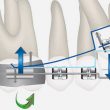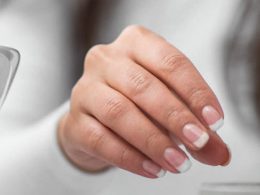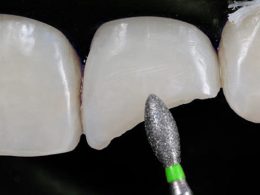Table of Contents
Restorative Dentistry can be defined as the Dental Specialty that studies and applies the diagnosis, treatment and dental prognosis of the patient in an integrated way. Preventive or restorative treatments must result in the maintenance or restoration of the shape, function and aesthetics of teeth and dental arches.
For this, it is necessary to know the materials and techniques available, which are constantly evolving, to select and apply the best treatment option for the restoration needs of each person and their clinical situation. A correct selection of the restorative treatment necessarily implies a commitment to the maximum preservation of the healthy tooth structure during its execution.
We understand by restorative procedures all those clinical practices that are used to reconstruct the missing, damaged or not very aesthetic parts of a tooth, as well as those destined to replace or replenish the evicted, absent or lost pieces.
Among the most common Restorative Dentistry procedures that occupy more than 90% of the useful time of any dental professional or clinic, we can find:
1- Ameloplasty
The aesthetic dental recontouring or ameloplasty is a technique that, by means of the selective grinding of certain areas of the enamel, allows us to improve the aesthetics of the treated teeth, especially in the anterior sector.
The aesthetic recontouring provides an optimal result in many cases in which the cost of other techniques would be very high or prohibitive. In addition to its aesthetic benefits, recontouring and polishing teeth in malposition or with a bad appearance, favors hygiene and reduces the possibility of fracture.
The indications for cosmetic dental recontouring are multiple, the main ones being: teeth with small fractures, slightly extruded, crowded or with congenital defects; wear due to bruxism and slight malpositions.
2- Teeth Whitening
In Aesthetic and Restorative Dentistry, teeth whitening is a clinical procedure that manages to reduce the original color of the teeth by several shades, leaving the teeth whiter and brighter.
It can be done in the office, at home, or by combining both techniques. Teeth whitening allows to eliminate most of the stains caused by extrinsic causes such as tea, coffee and other infusions, cigarettes and red wine; among other substances and foods.
However, not all dental stains or darkenings are removable or improvable through teeth whitening and may require other types of restorative dental treatments such as the use of porcelain veneers or crowns.
3- Dental Veneers
Dental veneers are thin sheets of porcelain or composite that adhere to the visible face of the tooth to improve its aesthetic appearance, and in some cases, to reinforce it.
But, due to their mainly aesthetic purpose, these sheets are placed only on the buccal aspect of the front and bicuspid teeth (premolars), as they are the most visible when we smile. Therefore, its objective is not to improve the functionality of the teeth, only to give them a more harmonious and pleasant appearance, embellishing the smile.
They are elements that are created tailored to each patient in order to offer the greatest possible naturalness and harmony, by being placed together with the rest of the natural teeth.
They are mainly used to correct dental defects of color, shape, size or position. Therefore, dental veneers are excellent for correcting such common defects as crooked, broken, separated (diastema), stained, irregular or severely worn teeth.
Without a doubt, the best are those made of ceramic or porcelain, since they are made by indirect technique (in the laboratory) and materials of high gloss and resistance (IPS e.max ceramic system).
Resin or composite veneers, although not as aesthetic or durable, represent an acceptable alternative to porcelain, especially in cases of economic limitation.
4- Direct Fillings
They represent the reference treatment when it comes to curing dental caries. A person’s teeth are damaged when food particles in their mouth are turned into acids by the bacteria that live there. These acids destroy tooth enamel and eventually the inner layers of its mineralized structure.
If left untreated, tooth decay can reach the pulp chamber, leaving the nerve and pulp exposed to bacteria and other aggressors. That often leads to death or pulp necrosis, which may require a root canal treatment or an extraction to treat it.
The best way to deal with cavities is to prevent them, or at least treat them when they are small or incipient. This can be done simply by using materials for direct filling, obviously after mechanically removing the decayed or infected tissue. Direct fillings can be made with silver amalgam, resin composites, and glass ionomer in some cases.
5- Adhesive Reconstructions
The adhesive technique is dedicated to the restoration of teeth with materials that literally “stick” to them. This science is now 50 years old, and has been constantly renewed, to the point that today 7 out of 10 restorations that are performed in a private practice are performed with an adhesive technique.
The restorative material used with this technique is known by the name of resin composite, which is completely biocompatible.
The main purpose of adhesion in Dentistry is to return to the tooth all the anatomy that characterizes it, using materials that are the closest thing to the natural tooth, and not only in its color, but also in its physical properties and resistance. This is the most important achievement of Adhesive Dentistry, the chameleon effect that is achieved in restorations, which makes them almost imperceptible to the human eye.
6- Inlays/Onlays
Inlays/onlays are used to restore teeth (usually molars) that have suffered extensive cavities, have undergone endodontics or have some type of fissure or fracture, but as long as the dimensions of the remaining structure do not require the placement of a crown.
They can be made of porcelain, gold or metallic alloys and represent a middle echelon between a direct restoration and a dental crown.
7- Endodontics or Root Canal Treatments
Endodontic treatments are procedures that treat the inside of the tooth and they seek to preserve its health and integrity, in order to maintain the natural dentition, the bone and the gum that surrounds it.
When a trauma, excessive dental wear or the indiscriminate advance of an untreated cavity reaches, exposes or infects the pulp or nerve of the tooth, and of course we want to preserve it; there is no alternative but to remove it and then disinfect and mechanically widen the empty root canals so that they are able to receive an inert, sterile and biocompatible filling material that completely occupies them, avoiding pain and the spread of the infectious process.
A root canal is usually the first step in restoring a badly destroyed or compromised tooth. Without treating and disinfecting the root and its canals, nothing can be placed on it, and dental extraction would be the only alternative.
Once the root is healthy, it is possible to fix inlays or crowns on it, and fully restore aesthetics and function to the treated tooth. When the loss of dental structure at the coronal level is very considerable, we must make artificial posts and cores that reinforce the tooth, prevent its fracture and provide retention to the artificial crown.
8- Artificial Posts and Cores
Artificial posts and cores are dental restorations that are used when there is very little remaining dentin in the coronal portion of the tooth, which is located above the gum.
As we have just said, these restorations reinforce the tooth and provide structure or surface to cement a crown. Posts and cores can be made of fiberglass-based materials, composites, or high-strength cast alloys.
There are direct and indirect techniques for their manufacture. Direct techniques require a single clinical session and are performed by the Dentist directly in the mouth. Indirect techniques generally involve making a plastic pattern that is then duplicated in the dental laboratory through metal foundry and casting processes.
Regardless of the type of post or core, the first step will always be the root canal treatment and its partial deobturation, to create the space that houses the structure inside the dental root.
9- Ceramic Crowns
Also known as a dental cap, a crown is a type of fixed prosthesis that is used to restore and reinforce a considerably damaged tooth. A crown renews the appearance of the tooth it covers and helps it regain its function. Crowns are often used after a root canal treatment or to rebuild teeth that have been severely affected by trauma.
They are usually made of ceramic or porcelain, but metals such as gold and nickel and chromium-based alloys can also be used.
10- Fixed Bridges
A fixed bridge is used to replenish or replace one or more missing teeth. It has two parts, the first consisting of crowns that are placed on the natural teeth closest to the empty or edentulous space, and the second, of artificial teeth that are held in place by the action of the abutments. Anchor teeth are called abutments, while artificial teeth are known as pontics or phantoms.
A fixed bridge is one of the most affordable options when it comes to replacing multiple adjoining teeth.
“Restorative Procedures Are All Those that Seek to Reconstruct the Missing, Damaged or Unaesthetic Parts of a Tooth, As Well As Those Destined to Replace or Replenish the Hopeless, Absent or Lost Pieces“.
DENTAL TIP
11- Osseointegrated Implants
Before the development of dental implants, removable dentures and fixed bridges were the only alternatives to replace one or more missing teeth. Dental implants are artificial titanium substitutes for the roots of missing teeth that are anchored to the jawbone.
They are indicated when it is necessary to replace one, several or even all the teeth in the mouth. Single implants avoid the need to grind, wear and compromise the teeth adjacent to the one that has been lost to make a traditional fixed bridge. We place an implant, a crown and voila, in this way a much more biological and conservative rehabilitation is achieved.
When several or all teeth are missing, multiple implants are placed and then individual crowns or exclusively implant-supported fixed prostheses are cemented or screwed onto them.
Save Thousands by Getting Dental Work in Venezuela!
On average, dental work in Venezuela is about a third the price of what you are used to paying at home, without a drop in the quality of care. All the process takes is just a little research and a few more logistics. In the “Dental Tourism” category of this same blog we describe all the considerations necessary to get dental care done in Venezuela.
The first thing you want to do is get a quote for the dental work you need done by our team. Most of the time, simply sending a few photos and X-rays to us will do just fine. The online consultation will provide a strong idea of what will need to be done, and will be able to provide you with a pretty close cost estimate for the dental procedures.
Through our WhatsApp or Email you can ask all the necessary questions about the proposed treatment and its details. DENTAL VIP has specially trained personnel for this function.
Once the quote is approved, you must indicate the date of your trip to corroborate the treatment viability in the selected period, ensure your accommodation and proceed with the purchase of air tickets.
Congrats! Now you are on your way to saving thousands by getting dental work in Venezuela.












